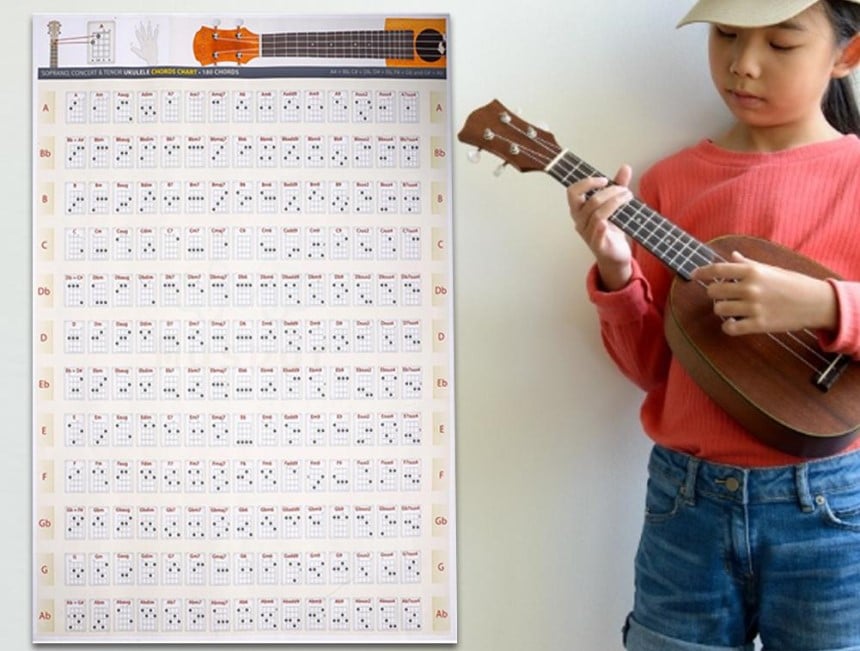Music has existed from the dawn of time, according to many scientists. Others, in fact, contend that music played a role in the evolution of plain language. This indicates that people have been making music with chords for a long time and that proper ukulele chord progressions may have been mastered shortly after the instrument was invented.
You may be interested in learning about musicology and the way it was developed using patterns and codes when learning to play the ukulele Trusted Source If you do one thing this month … learn to play the ukulele | Life and style | The Guardian Master just three chords, and you can impress your friends with a spontaneous burst of song www.theguardian.com . This tutorial will show you how to play simple ukulele chord shifts, which are a crucial part of learning and appreciating music theory.
 The chord progression consists of a harmonic scale made up of equal temperament structures. It is made up of notes of the same frequency, and ratio ranges as each other, as opposed to different tuning schemes. It is the result of European musical heritage.
The chord progression consists of a harmonic scale made up of equal temperament structures. It is made up of notes of the same frequency, and ratio ranges as each other, as opposed to different tuning schemes. It is the result of European musical heritage.
You’ll note that the chords change in predictable ways after you’ve learned them. You’ll start hearing them in the songs you’re listening to as you spend more time with them. Musicians invented the first notes based on scales, with the numerical system, to aid them in discussing these progressions. To start, we’ll categorize ukulele chord progressions into major groups.
When it comes to composing music and writing songs, keys are crucial because they affect sound and mood. So, what’s the best way to find out a song’s secret?
Understanding how chord progressions are arranged and the principles that govern them will help you develop a greater understanding of how music is composed. You should adopt the simple chord progressions for major and minor keys to any key you’re playing or writing in once you’ve mastered them. Music has mathematical underpinnings, which means it has patterns and logic, which fall together to form cogent, cohesive parts that sound pleasing to the ear.
You’ll notice that several songs revolve around three-chord progressions when you learn to play the ukulele (or another instrument). Technically, those are based on four chords, but two of them are normally the same.
A melody is often written around the chords. The chords were applied to balance and strengthen the melody in other parts. In any case, three chord progressions can be used in American music. They have a strong harmonic base for everything from Beethoven to punk rock. Three chord progressions are a wonderful place to practice if you want to learn to write your own songs.
To make a song work, it takes more than a strong chord progression. That’s because the better songwriting progressions are those that don’t get in the way of the remainder of the song. And there has to be something else going on for the song to be successful.
Poor chord progressions, in my mind, are just one of the potential explanations for a song’s failure. But it’s the one that most writers obsess over because it’s the part of writing that, if it’s not working, is the most obvious. My point is that you’ll hear more people express dissatisfaction with a faulty chord progression than, say, a faulty melodic structure.
The Roman numerals in a chord progression formula represent the chord’s triad structure. It is possible to construct various chords by extending these chords with additional diatonic tones. In other words, as long as the notes are from the diatonic scale, you should apply them to these chords. The chord’s harmonic function remains unchanged.
The Roman numerals reflect the diatonic scale’s chord positions. The diagram below illustrates how various chords can be used to interpret the Roman numeral scale degree. The chord formula can be used to interpret any of the instances below.
When learning about ukulele chord progressions, you will learn about the number system for music? Instead of chords being used, artists use chord numbers to add chord numbers to their progressions.
In every key, there is a numerical scale. In the key of C major, for example, C is assigned I, Dm is assigned II, E is assigned III, F is assigned IV, and so on. Major chords are represented by capitalized roman numerals, and minor chords are represented by lower case roman numerals.
Let’s pretend you’re operating on a C scale. Since the size is so big, you’ll only use numbers to fill in the gaps.
 Are you looking to make incredible music? If you use one of the tried and tested chord progressions, the process would be much simpler. It just basically consists of Roman numerals assigned to keys; it’s nothing complicated. The major Roman numeral chords are upper case, while the diminished chord is lowercase, as can be seen. Individual chord numbers are given a numerical value. There are three traditional chord progressions for the ukulele. By playing these chords together, the song gains harmony. The three-chord progression would be familiar to fans of other contemporary American music styles.
Are you looking to make incredible music? If you use one of the tried and tested chord progressions, the process would be much simpler. It just basically consists of Roman numerals assigned to keys; it’s nothing complicated. The major Roman numeral chords are upper case, while the diminished chord is lowercase, as can be seen. Individual chord numbers are given a numerical value. There are three traditional chord progressions for the ukulele. By playing these chords together, the song gains harmony. The three-chord progression would be familiar to fans of other contemporary American music styles.
You can also address the issue of a poor chord progression by merely looking for a book that contains progression lists. But how can you quickly solve the issue of structured design? To study music in the same way as an architect studies homes requires expertise, experience, and a strong desire.
You’ll enjoy the rewards if you’re able to devote the time to actively studying music rather than merely playing around with it. When songs succeed, it’s for a special cause. It’s not a crapshoot, and it’s not a game of luck. Songwriting is a skill that can be honed and learned. You should start refining your songs right now if you have the right equipment. A great ukulele to get started with is the Oscar Schmidt or the Donner DUB.